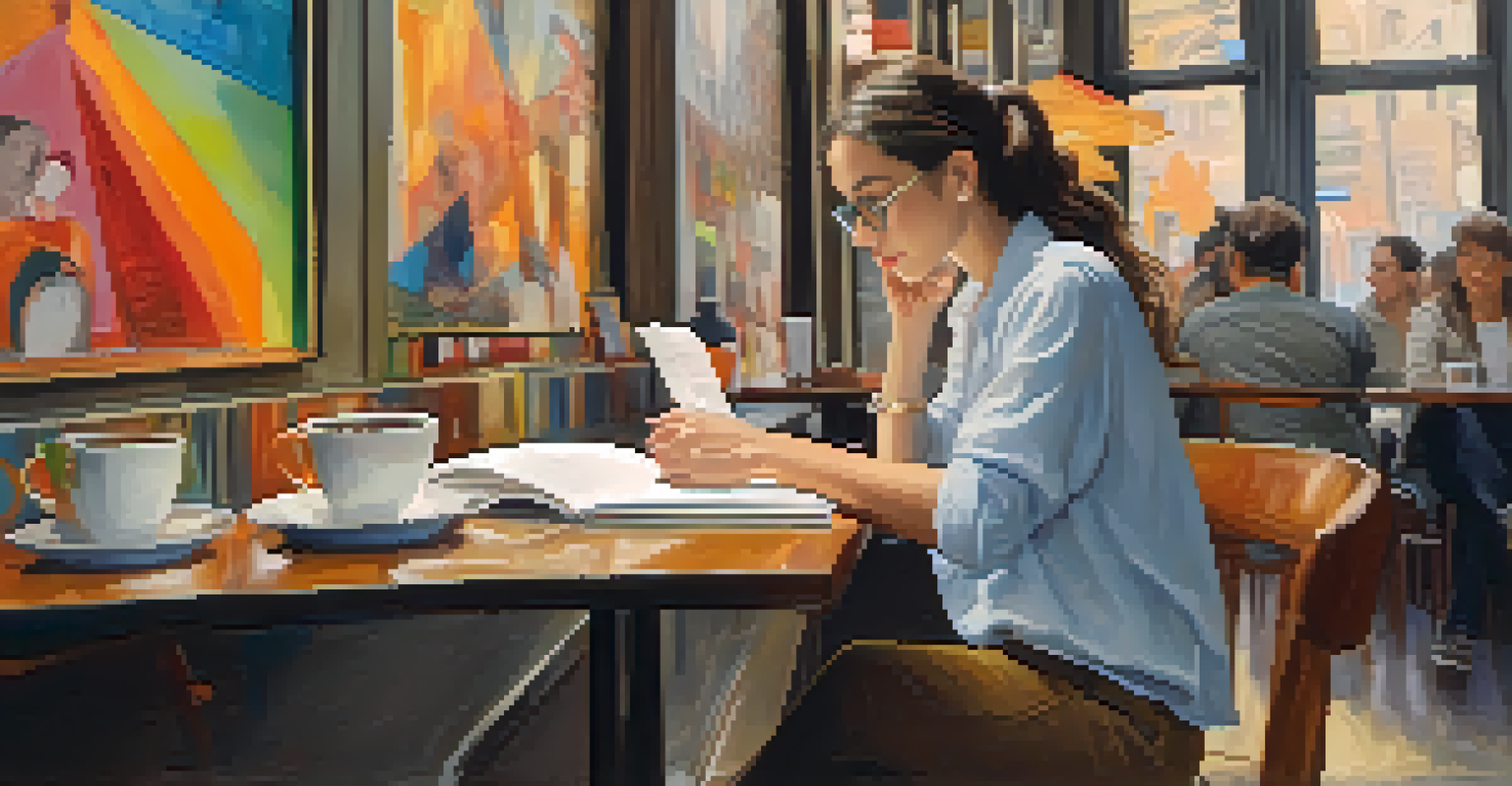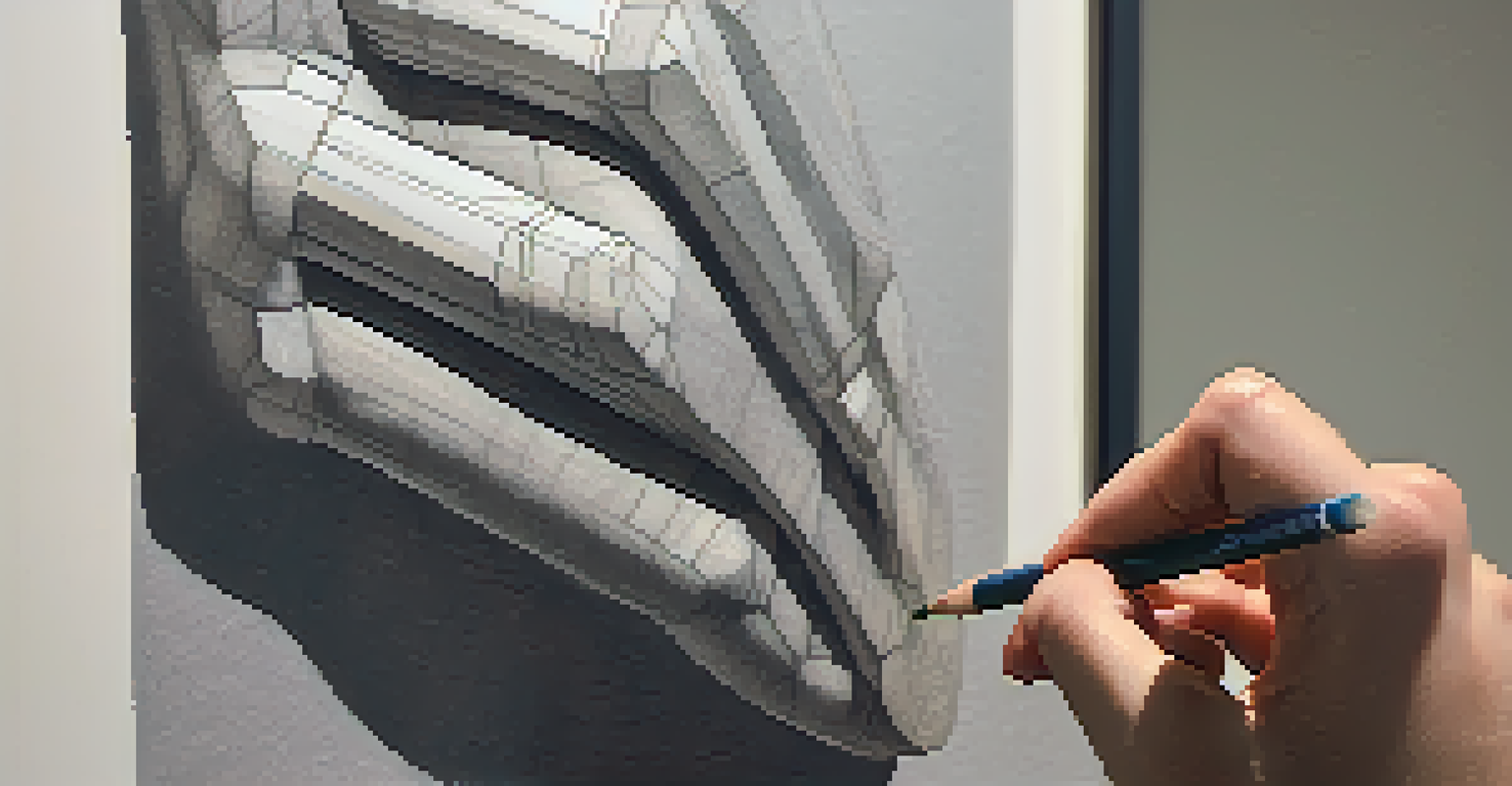The Role of Art Critics in Promoting Art Exhibitions

Understanding the Role of Art Critics in the Art World
Art critics serve as the bridge between artists and the audience, interpreting and evaluating artworks for the public. They possess a deep understanding of art history and theory, enabling them to provide context and insight into various pieces and exhibitions. By articulating their perspectives, critics help to shape public opinion and elevate the discourse surrounding art.
Critics are the gatekeepers of art. They have the power to elevate the discussion and bring new talent to the forefront.
Their influence extends beyond mere evaluation; critics often highlight emerging artists and innovative trends, thereby guiding collectors, curators, and casual viewers alike. This role is crucial, especially in a world where countless exhibitions vie for attention, and discerning the valuable from the mediocre can be a daunting task. Through their reviews, critics can bring important works to the forefront that might otherwise go unnoticed.
Moreover, the credibility and reputation of a critic can significantly impact an artist's career. A positive review from a respected critic can lead to increased visibility, sales, and opportunities, while a negative critique may have the opposite effect. Thus, the relationship between art critics and artists is both complex and vital for the art ecosystem.
How Critics Curate Conversations Around Art Exhibitions
Critics play a pivotal role in curating conversations about art exhibitions. They analyze the themes, techniques, and cultural significance of the artworks on display, encouraging deeper engagement from the audience. This dialogue is essential, as it invites viewers to reflect on their perceptions and understandings of art in new ways.

Through their writings, critics can spotlight key elements of an exhibition, such as the artist's intention or the historical context of the work. This not only enhances the viewer's experience but also fosters a community of discourse among art enthusiasts. For instance, a critic might explore how a contemporary exhibition relates to past movements, providing a richer narrative for attendees.
Critics Bridge Artists and Audience
Art critics interpret and evaluate artworks, helping to shape public opinion and elevate the discourse surrounding art.
Additionally, critics often use social media platforms to extend these conversations, creating spaces where audiences can connect and share their thoughts. This democratization of dialogue around art helps to build a more inclusive environment, where diverse voices can contribute to the narrative surrounding exhibitions.
The Importance of Reviews in Boosting Exhibition Attendance
Reviews from art critics can significantly influence attendance at exhibitions. When a critic publishes a glowing review, it can pique the interest of potential visitors who may not have otherwise considered attending. This ripple effect can lead to increased foot traffic and heightened interest in the artworks showcased.
The role of the critic is to make the invisible visible, to give voice to the silent, and to shine a light on the overlooked.
Conversely, a lukewarm or negative review can deter audiences from visiting, which underscores the power critics wield in shaping public perception. For galleries and museums, the stakes are high as they rely on attendance for funding and to support future exhibitions. Therefore, fostering a good relationship with critics is paramount.
Moreover, many art enthusiasts often look to critics for guidance on which exhibitions are worth their time. A well-respected critic's endorsement can serve as a stamp of approval, leading to a surge in visitors eager to experience what has been recommended. This symbiotic relationship highlights the essential role critics play in the broader art community.
Art Critics as Advocates for Emerging Artists
Art critics often take on the role of advocates for emerging artists, providing them with a platform to showcase their work. By highlighting new talent in their reviews, critics can help introduce these artists to a wider audience, which is crucial for their growth and success. This advocacy can lead to opportunities such as solo exhibitions, grants, or even sales.
For instance, a critic may write an article focused on a rising star in the art world, bringing attention to their unique style or innovative approach. This spotlight can attract collectors and curators who might have otherwise overlooked the artist. The power to influence who gets seen and celebrated is a significant responsibility that critics carry.
Reviews Boost Exhibition Attendance
Positive reviews from critics can significantly increase attendance at exhibitions, while negative critiques can deter potential visitors.
Additionally, by championing underrepresented voices in the art community, critics can contribute to a more diverse and inclusive art landscape. Their support can help shift the narrative around what is considered valuable or noteworthy in the art world, paving the way for new perspectives and ideas.
The Evolution of Art Criticism in the Digital Age
The digital age has transformed the landscape of art criticism, making it more accessible and immediate than ever. With the rise of blogs, social media, and online platforms, critics can share their thoughts and reviews with a global audience at the click of a button. This has democratized art criticism, allowing for a broader range of voices to be heard.
However, this shift also means that the quality of criticism can vary widely, as anyone with an internet connection can express their opinions. While this diversity can enrich discussions, it also challenges traditional critics to maintain their credibility and authority. They must adapt and find ways to stand out in a crowded digital space.
Moreover, digital platforms enable critics to engage in real-time conversations with their audience, fostering a more interactive experience. This immediacy allows for a dynamic exchange of ideas, creating a vibrant community around art exhibitions that can evolve and grow as new works are introduced.
The Relationship Between Critics and Curators
The relationship between art critics and curators is a fascinating dynamic that can significantly impact exhibitions. Curators often rely on critics' insights to shape their exhibitions and ensure they resonate with the audience. This collaboration can lead to more engaging and thought-provoking shows that capture public interest.
Critics, on the other hand, benefit from curators' expertise and insider knowledge of the art world. By working together, they can create a feedback loop that enhances both the critic's understanding of the exhibition and the curator's awareness of audience reception. This synergy can elevate the overall experience for both artists and viewers.
Critics Advocate for Emerging Talent
By highlighting new artists, critics provide crucial support that can lead to opportunities for growth and recognition in the art world.
Ultimately, this relationship underscores the importance of communication and collaboration in the art world. When critics and curators work hand in hand, they can create exhibitions that not only showcase remarkable artworks but also foster meaningful conversations and connections within the art community.
Challenges Faced by Art Critics Today
Despite their pivotal role, art critics face several challenges in today's rapidly changing art landscape. One significant issue is the pressure to keep up with the sheer volume of exhibitions and emerging artists. With so many events happening simultaneously, critics must prioritize their time and choose which to cover, often leading to difficult decisions.
Additionally, the rise of social media has created an environment where quick, often superficial opinions can overshadow in-depth analysis. Critics may feel compelled to produce content that garners immediate attention rather than taking the time to explore the nuances of an exhibition. This shift can dilute the quality of criticism and limit thoughtful discourse.

Finally, critics must navigate the delicate balance between promoting art and maintaining their integrity. As the art market becomes increasingly commercialized, critics may face pressure from galleries and collectors to provide favorable reviews. Upholding their independence while fostering relationships within the art world is a challenge that many critics grapple with today.